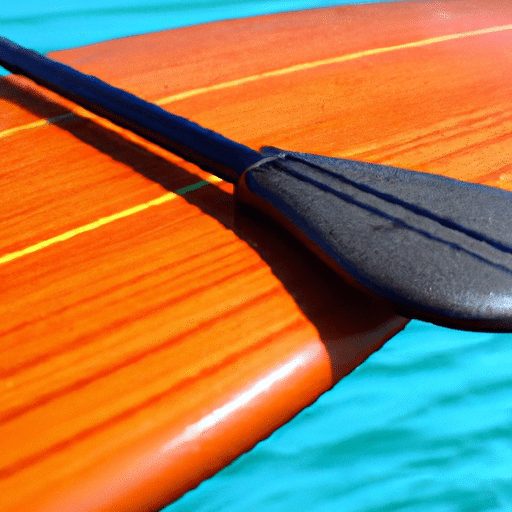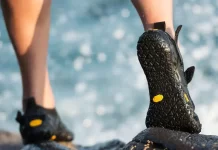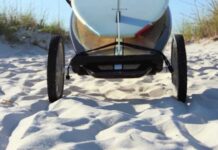Curious about the ideal height for your SUP paddle? We all want to make the most of our paddleboarding experience, and selecting the right paddle height can greatly enhance our performance on the water. But how can we determine the perfect length that suits our individual needs? In this article, we will explore some helpful tips and techniques to ensure you find the ideal SUP paddle height that allows you to paddle with ease and maximize your enjoyment out on the water.
Factors to Consider
When it comes to choosing the right paddle for stand-up paddleboarding (SUP), several factors need to be taken into consideration. These factors include the type and purpose of the paddle, the experience level of the paddler, body height and weight, as well as paddling style and technique. Taking all of these factors into account will ensure that you have a paddle that is comfortable, efficient, and suits your specific needs.
Paddle Type and Purpose
The type of paddle you choose will greatly depend on your intended purpose. There are several different types of paddles available, each designed for specific activities such as flatwater cruising, surfing, or racing. Flatwater paddles tend to have larger blades for more power and efficiency, while surf paddles have smaller blades for quick and agile maneuverability. Racing paddles, on the other hand, are typically longer and have narrower blades to allow for rapid strokes.
Experience Level
Your experience level is another crucial factor to consider when selecting a paddle. Beginners may benefit from a paddle with a larger blade size, as it will provide more stability and power. As your skills progress, you may opt for a smaller blade that allows for quicker acceleration and maneuvering. If you are an experienced paddler, you may also want to consider a paddle with a more advanced construction material, such as carbon fiber, for enhanced performance.
Body Height and Weight
Your body height and weight are important considerations when choosing the right paddle length. Taller individuals will generally require a longer paddle, while shorter individuals will need a shorter paddle. Additionally, your weight may also impact the paddle length, as heavier individuals may prefer a slightly longer paddle for increased stability and control. It is crucial to select a paddle that accommodates your specific proportions to ensure a comfortable and efficient paddling experience.
Paddling Style and Technique
Your paddling style and technique should also be taken into consideration when selecting a paddle. Some paddlers prefer a high-cadence, fast-paced stroke, while others may opt for a slower, more relaxed stroke. Your technique may also vary depending on whether you prefer to paddle more vertically or with a slight angle to the water. Understanding your preferred paddling style and technique will allow you to choose a paddle that complements and enhances your natural movement on the water.
Measuring Your Paddle
Once you have considered the various factors that will influence your paddle choice, it is time to measure your paddle to determine the correct length. Proper measurements will ensure that you have a paddle that is the optimal size for your height and paddling style. There are several key measurements to take into account: stand-up position, handle placement, blade angle, and average paddle lengths.
Stand-Up Position
To find the correct length for your paddle, start by standing up straight with your feet shoulder-width apart. Hold the paddle upside down, with the blade touching the ground. Extend your arm straight up above your head, ensuring that your elbow is fully extended. The top of the handle should align with your wrist crease. This will provide a good starting point for the overall length of your paddle.
Handle Placement
The handle placement is another important factor to consider when measuring your paddle. The majority of paddlers prefer the handle to be positioned at their shoulder level. This allows for a comfortable grip and optimal control while paddling. Adjusting the handle placement may require you to cut the paddle shaft or add an extension piece, depending on your measurements.
Blade Angle
The blade angle is the angle at which the blade is set in relation to the shaft. Most paddles have a slight blade angle, ranging from 10 to 12 degrees. A blade angle can affect the efficiency and comfort of your paddling stroke. Adjusting the blade angle to suit your paddling style and technique can help improve your overall performance on the water.
Average Paddle Lengths
While the measurements mentioned above serve as a general guideline, it is also helpful to be aware of the average paddle lengths for different types of paddleboarding activities. For stand-up paddleboarding (SUP), the average paddle length is typically between 8 and 10 inches longer than your height. For surfing, the paddle length is usually around the same height as the paddler or slightly shorter. Racing paddles, on the other hand, tend to be longer, with lengths that range from 6 to 12 inches taller than the paddler.
Determining the Correct Length
After taking measurements and considering the average lengths, it’s time to determine the correct paddle length for your specific needs. The correct length will provide you with optimal performance and comfort, allowing you to fully enjoy your paddling experience. The correct paddle length can vary depending on the type of paddleboarding activity you will be engaging in.
Stand-Up Paddleboarding (SUP) Length
For stand-up paddleboarding (SUP), the correct paddle length is usually determined by your height. As a general rule, your paddle should be between 8 and 10 inches taller than you. This will ensure that you have enough reach and power while maintaining a comfortable paddling position. Experimenting with different lengths may be necessary to find the perfect balance for your individual needs.
Surfing Length
Surf paddles are typically shorter in length compared to SUP paddles. The correct paddle length for surfing is usually around the same height as the paddler or slightly shorter. A shorter paddle allows for quick and agile maneuverability in the waves, making it easier to catch waves and execute turns. Finding the right surf paddle length may require some experimentation to find the perfect fit for your surfing style and technique.
Racing Length
Racing paddles are designed for speed and efficiency, and their length can vary depending on the individual paddler and type of racing. As a general guideline, racing paddles are often longer than SUP and surf paddles. The length of a racing paddle typically ranges from 6 to 12 inches taller than the paddler’s height. Longer paddles allow for longer and more powerful strokes, which can be advantageous in racing situations. However, it’s important to find a length that is comfortable for you and allows for optimal performance without sacrificing control or technique.
Adjusting the Paddle Length
If you find that your paddle length needs to be adjusted, there are several options available to accommodate your needs. Fixed-length paddles, 2-piece adjustable paddles, and 3-piece adjustable paddles all offer different levels of flexibility and convenience.
Fixed-Length Paddles
Fixed-length paddles are exactly what their name suggests – they cannot be adjusted. These paddles offer a lightweight and durable option for paddlers who have determined their ideal paddle length and do not need the flexibility to adjust it. Fixed-length paddles are often preferred by experienced paddlers who have dialed in their technique and are confident in their preferred length.
2-Piece Adjustable Paddles
2-piece adjustable paddles are a popular choice among paddlers who want the convenience of adjusting their paddle length. These paddles consist of two separate pieces that can be joined together at different lengths. This allows for easy adjustment to accommodate different paddling conditions or preferences. 2-piece adjustable paddles are ideal for paddlers who have not yet found their perfect paddle length or who frequently engage in different types of paddleboarding activities that require varying lengths.
3-Piece Adjustable Paddles
3-piece adjustable paddles offer the highest level of flexibility and convenience. These paddles consist of three separate pieces, allowing for even greater adjustability than 2-piece paddles. 3-piece adjustable paddles are often favored by travelers or paddlers who frequently transport their equipment. The ability to break the paddle down into three pieces makes it more compact and easier to pack. This type of paddle is also suitable for paddlers who may want to share their paddle with different individuals or have the option to adjust the length on the go.
Proper Paddle Technique
Having the correct paddle length is essential, but it is equally important to utilize proper paddle technique to maximize efficiency and reduce fatigue. Here are some key elements of proper paddle technique:
Grip and Hand Placement
When holding the paddle, your top hand should be gripping the handle comfortably, with your fingers wrapped around it. The paddle shaft should rest diagonally across your palm, allowing for efficient power transfer from your body to the water. Your bottom hand should be placed on the shaft, ensuring a firm and secure grip. Maintaining proper hand placement will help maintain control and prevent unnecessary strain on your wrists and arms.
Body Position
Proper body position involves standing with a slight bend in your knees and a straight back. This position allows for better balance and stability on the board while engaging your core muscles for a more powerful stroke. Keep your eyes forward and your shoulders relaxed, avoiding tension or stiffness in your upper body. Your body should be aligned with the direction you are paddling, promoting efficient movement through the water.
Blade Entry and Exit
To optimize your paddle stroke, it’s important to focus on the blade entry and exit points in the water. The blade should enter the water smoothly, with minimal splash or disturbance. To achieve this, aim to enter the blade at a slight angle, ensuring that the entire blade is submerged by the time it reaches your feet. As you pull the paddle back, maintain an even and steady pressure, engaging your core and upper body for power. Finally, exit the blade smoothly by slicing it out of the water, again minimizing any unnecessary splash or disturbance.
Paddle Sizing Tips
While the above guidelines and techniques are helpful in determining your ideal paddle length, sometimes it takes a bit of trial and error to find the perfect fit. Here are some additional tips to refine your paddle sizing:
Trial and Error
As with any sport or activity, paddle sizing may require some trial and error. Experimenting with different lengths, blade sizes, and materials can offer valuable insights into your preferred style and what works best for your body proportions. Take the time to try out different paddles and pay attention to how they feel and perform on the water. This will allow you to fine-tune your paddle choice and ensure that you have the ideal fit for your needs.
Seeking Advice
If you are still unsure about which paddle length to choose, do not hesitate to seek advice from experienced paddlers or professionals in the field. They can provide valuable insights based on their own experiences and expertise. Additionally, they may be able to offer recommendations based on your specific body proportions, paddling style, and intended use of the paddle.
Renting or Borrowing
If purchasing a paddle outright is not an option or if you are still in the process of discovering your preferences, consider renting or borrowing paddles. Many paddleboard rental shops offer a variety of paddle options, allowing you to test out different lengths and styles before committing to a purchase. This can be a cost-effective way to fine-tune your paddle choice and gain a better understanding of what works best for you.
Testing the Paddle
Once you have selected a paddle that you believe is the correct length and suits your needs, it is important to test it out on the water. Testing the paddle will give you a firsthand experience of how it feels and performs, allowing you to make any necessary adjustments or changes. Here are some aspects to consider when testing your paddle:
On-Water Testing
Taking your paddle out onto the water is the best way to gauge its performance. Pay attention to how it feels in your hands and how it responds to your strokes. Does the length feel comfortable? Is it easy to handle and maneuver? Does it provide enough power and efficiency for your intended use? On-water testing will provide valuable insights into whether the paddle is the right fit for you.
Comfort and Efficiency
During your on-water testing, assess the level of comfort and efficiency the paddle provides. A paddle that is the correct length and suited to your body proportions should feel comfortable in your hands and allow you to maintain a natural and efficient paddling stroke. Pay attention to any discomfort or strain in your wrists, shoulders, or core muscles. Additionally, assess how smoothly the paddle moves through the water and how effective it is in generating power and speed.
Ease of Handling
Another important aspect to consider is the overall ease of handling the paddle. Is it lightweight and easy to carry? Does it fit comfortably in the paddleboard bag or vehicle? Assess the overall convenience and practicality of the paddle, as this will impact your overall enjoyment and willingness to use it regularly. A paddle that is easy to handle and transport will ensure that you can effortlessly take it to your preferred paddling locations.
Recognizing the Wrong Fit
Despite careful consideration, it is possible to end up with a paddle that is not the right fit for you. Here are some signs that indicate the paddle may not be suitable:
Poor Paddling Technique
If you find that your technique is suffering or that you are struggling to maintain efficient strokes, it may be an indication that the paddle is not the correct length. An ill-fitting paddle can impede proper technique and make it difficult to achieve optimal performance on the water. If you consistently find yourself experiencing poor technique or difficulties with your strokes, it may be worth reassessing the paddle length and making any necessary adjustments.
Discomfort and Fatigue
An ill-fitting paddle can also cause discomfort and fatigue. If you frequently experience sore wrists, shoulders, or core muscles while paddling, it may be due to an improperly sized paddle. Discomfort and fatigue are signs that your body is compensating for the inefficient paddle length, leading to unnecessary strain. A properly sized paddle will allow for a more comfortable and enjoyable paddling experience, with reduced strain and fatigue.
Lack of Control
Lack of control over the paddle and the board can also indicate an ill-fitting paddle. If you find it difficult to maintain stability and balance while paddling or struggle to control the direction and maneuverability of the board, it may be due to an incorrect paddle length. This lack of control can be both frustrating and potentially dangerous, as it compromises your overall paddling experience. A properly sized paddle will provide better control and enhance your confidence and enjoyment on the water.
Conclusion
Choosing the right paddle length is crucial for a comfortable, efficient, and enjoyable stand-up paddleboarding experience. Factors such as paddle type and purpose, experience level, body height and weight, as well as paddling style and technique, all play a role in determining the correct length. By taking careful measurements, considering the different paddle options, and testing the paddle on the water, you can ensure that you have a paddle that suits your individual needs. Proper paddle technique and paying attention to signs of a wrong fit are also important for maximizing performance and preventing discomfort or fatigue. With the right paddle length in hand, you can confidently navigate the waters and fully immerse yourself in the wonders of stand-up paddleboarding.





































